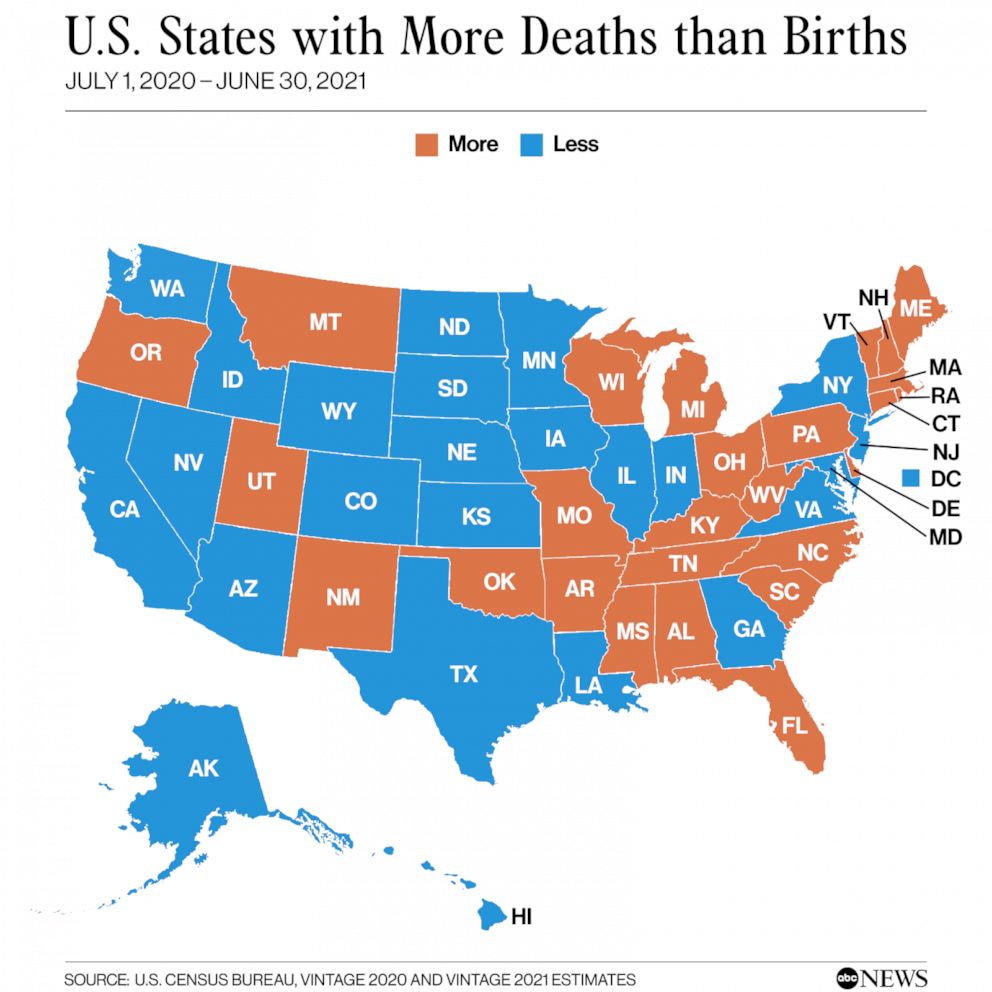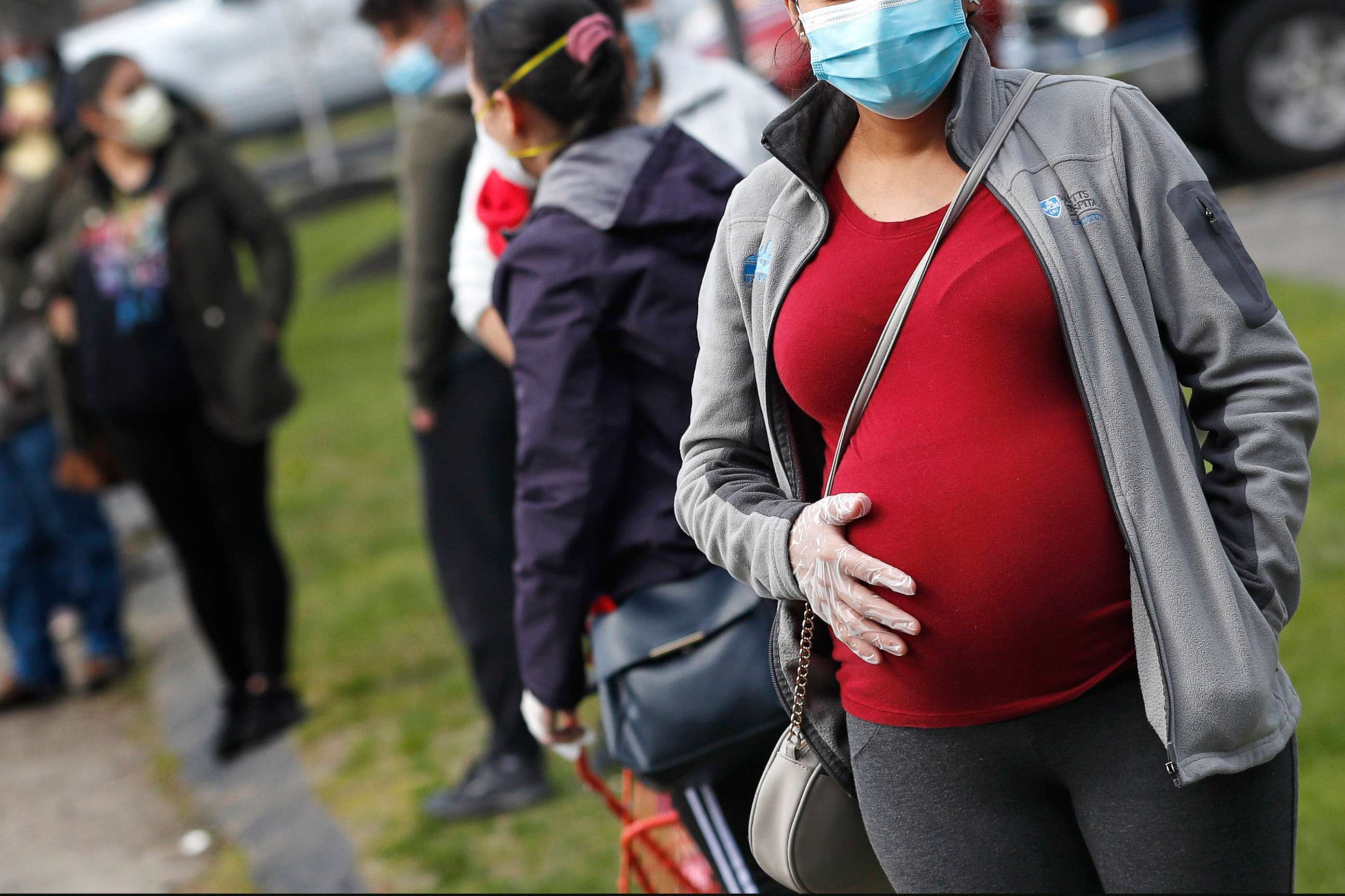Half of all US states saw more deaths than births, likely driven by COVID
The Northeast had the most states that saw more deaths than births.
Half of all states experienced more deaths than births over a 12-month period, largely due to the COVID-19 pandemic, according to a new report from the U.S. Census Bureau.
The population estimates, published Thursday, showed that 25 states saw what is known as natural decrease -- when more people die in a state or county than are born -- between July 1, 2020 and June 30, 2021.
What's more, about 73% of U.S. counties saw more deaths than births over that same time frame, up from 55.5% over the previous 12-month period.
Every state, aside from Hawaii and West Virginia, had more counties reporting natural decreases in 2021 compared to 2020.
"Fewer births, an aging population and increased mortality -- intensified by the COVID-19 pandemic -- contributed to a rise in natural decrease," the Census Bureau said in a statement. "The 2020-2021 period was unique because it was the first time the COVID-19 pandemic affected both births and deaths."

The Census Bureau estimates are based on final data through 2019 from the Centers for Disease Control and Prevention's National Center for Health Statistics, as well as state partners, and provisional data to capture recent trends.
The estimates are a stark contrast from the trends seen in the previous decade.
Prior to this period, the greatest number of states with natural decreases between 2011 and 2020 was eight.
That high occurred between 2019 and 2020, which included the start of the COVID pandemic.
The report found that all states had declines in births and increases in deaths, but it did not lead to natural decreases across the board.
Some regions of the U.S. experienced more natural decrease than others. In the Northeast, for example, seven out of nine states saw more deaths than births.
Of those seven states, three -- Maine, New Hampshire and Rhode Island -- saw 100% of their counties report more deaths than births.
Delaware, which is included in the Census Bureau report's Southern region, also saw all of its counties report natural decreases.
Meanwhile, the West had the fewest number of states reporting more death than births with just three out of 12 states doing so.
However, the report noted that some counties saw declines in population due to migration, or people moving out of the county to another place within the U.S.
The top three states that experienced net domestic migration loss were Alaska, Louisiana and Illinois.
Of the states that saw natural increases, or more births than deaths, some saw single counties responsible for said increases, according to the report.

In Arizona, natural increases in Maricopa County -- where Phoenix and Mesa are located -- were enough to offset decreases in other countries.
Additionally, in New York, natural increases in New York City's five boroughs, or five counties, offset decreases seen in upstate counties.
Overall, the states with the largest increases were California, Georgia, New York, Texas and Utah.
Although births have been on the decline for several years, the researchers believe the trend in births and deaths seen over the 2020-2021 period was undoubtedly affected by the COVID pandemic.
In the early days of the pandemic, many experts suggested lockdowns and stay-at-home orders would lead to a spike in births.
However, just the opposite happened and fewer Americans are giving birth.
A report from the Guttmacher Institute found there are several reasons that people have delayed having babies during the pandemic including worries of financial insecurity and the direction of the pandemic.



